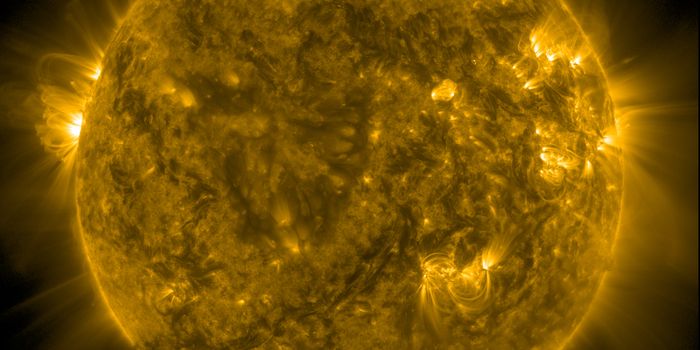A Changed Game Plan for the Dark Matter Hunt
Constituting 27% of the total matter-energy continuum in our universe, dark matter is a hypothetic entity that is thought to be abundant, capable of influencing ordinary matter through gravity, but shy from visible electromagnetic radiation such as light (hence the name "dark"). Physicists have long speculated that the weakly-interacting massive particles (WIMPs) are likely candidates for dark matter. However, after years of experimentation (e.g. the supersymmetry experiment at the Large Hadron Collider) and detection, no WIMPs have yet been discovered.
Disappointed and perplexed, scientists are now going back to the drawing board to map out a different plan for the search of dark matter. Led by Kathryn Zurek, a theoretical physicist at the Department of Energy's Lawrence Berkeley National Laboratory (Berkeley Lab) and UC Berkeley and a pioneer the idea of low-mass dark matter, physics researchers are now contemplating with various new experiments and detecting mechanisms that are sensitive enough to capture these "light-weight" dark matter.
According to Zurek and her Berkeley colleagues, the lighter form of dark matter are wavelike ultralight particles known as axions. It could be made of one or more types of not-yet-discovered basic particles. In a DOE report, the Berkeley scientists highlighted the "Basic Research Needs for Dark Matter Small Projects New Initiatives", and listed three major priorities in the re-imagined search for dark matter.
The first and relatively easy step to take is to utilize particle accelerators in DOE-funded facilities to create and detect dark matter particles that are below the proton mass. Given the abundance of dark matter, one would expect that there should be plenty on Earth, hidden in the plain sight (but just behind the concealed world of particles). These bombardment beam experiments, if successful, could help us unravel the origins of dark matter and its interactions with ordinary matter.
The direct detection of individual galactic dark matter particles is still on the table. But unlike the older scheme, the researchers want us to track particles that are down to a mass close to 1 trillion times smaller than that of a proton. These type of detection require, no doubt, interactions with advanced, ultrasensitive detectors. There are already underground experimental areas and equipment already in place, as noted in the report.
The last point of priority, the researchers emphasized on the detection of so-called QCD (quantum chromodynamics) axion, which was first postulated in 1977 to resolve the strong CP problem in quantum chromodynamics. With advances in theory and detecting mechanisms, scientists are now capable of probing the existence of this type of axion-based dark matter across the entire spectrum of its expected ultralight mass range.
How Close Are We to Finding Dark Matter? (Seeker)
Source: Science Daily









